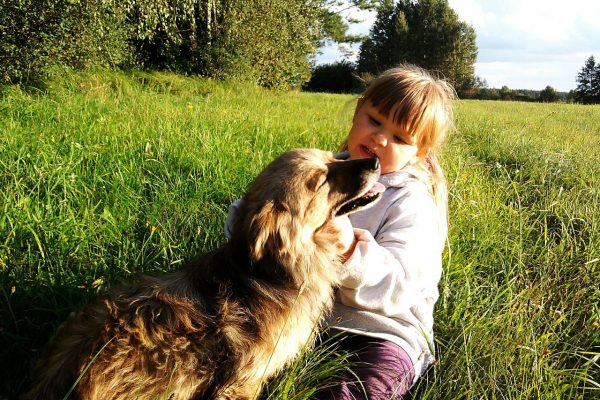Getting a new dog is wonderful and exciting, especially for children. Children love animals but often are unable to recognize when the animal may be fearful or anxious. By teaching children how to appropriately approach, handle, and interact with dogs it greatly reduces the chance of a dog bite injury and improves the relationship your child has with their pet. Below are a few steps you can take to ensure that the first meeting goes smoothly and your new dog integrates well into your child’s life:
Teach your child how to greet the dog. It makes dogs uncomfortable when unfamiliar people run up to them and touch them. It would make you uncomfortable as well, right? When introducing dogs and kids let the dog approach your child. Dogs naturally greet each other from the side, so have the child face or kneel sideways and calmly let the dog sniff them. This allows the dog to greet the child on their own terms and will prevent the dog from becoming overwhelmed.
Show your child how to pet and touch the dog. Children sometimes do not realize when they are squeezing too hard, pulling on a dog’s hair or tail, or are unintentionally hurting the pet. You can avoid this by showing your child how to appropriately touch and pet a dog. Do not let them hug or squeeze the dog. Instead, let the child pet the chest and shoulders avoiding areas that make dogs uncomfortable such as the top of their head and their tail. Once you know how the dog will react you may let your child pet more sensitive areas like the belly and under the chin.
Teach your children how to watch your dog’s body language and facial expressions. Deciphering canine body language is an important competency to have to grow the bond between you and your pet. By teaching your children this skill they will be able to notice warning signs in their own dog as well as signs in unfamiliar dogs that tell them if the animal is unhappy or stressed. Happy, relaxed dogs will have soft eyes, an open or smiling mouth with relaxed lips, a loose stance, relaxed tail, with ears forward, and head erect. Fearful or aggressive dogs will often have wide eyes (whale eye), a tucked or highly raised and rigid tail, ears back or far forward, a tight mouth, or raised hair on their back. Nervous dogs will also often yawn or lick their lips to reduce their anxiety.
Ensure your child does not interrupt your dog while it is eating, sleeping or playing. Children should be taught to treat dogs as they would other people. According to renowned animal behaviorist Dr. Sophia Yin, it is appropriate that children leave the dog’s food and toys alone and let the dog rest without being disrupted. Your dog should have a safe, quiet place in the home where it can rest and have access to important resources such as water where they will not be disturbed.
Always supervise pets and children. Safety is crucial when bringing a pet into a household with children and it is important to never leave your child unattended with a pet. Even the most tolerant dogs can react dangerously when they are frightened or accidentally injured. To protect both your child and your dog, it is best to always watch them together.
With the right education and careful supervision your dog and child will develop a wonderful relationship. Children can learn about responsibility, emotional intelligence, compassion, and empathy and the companionship can keep them active and create a bond to last a lifetime.





